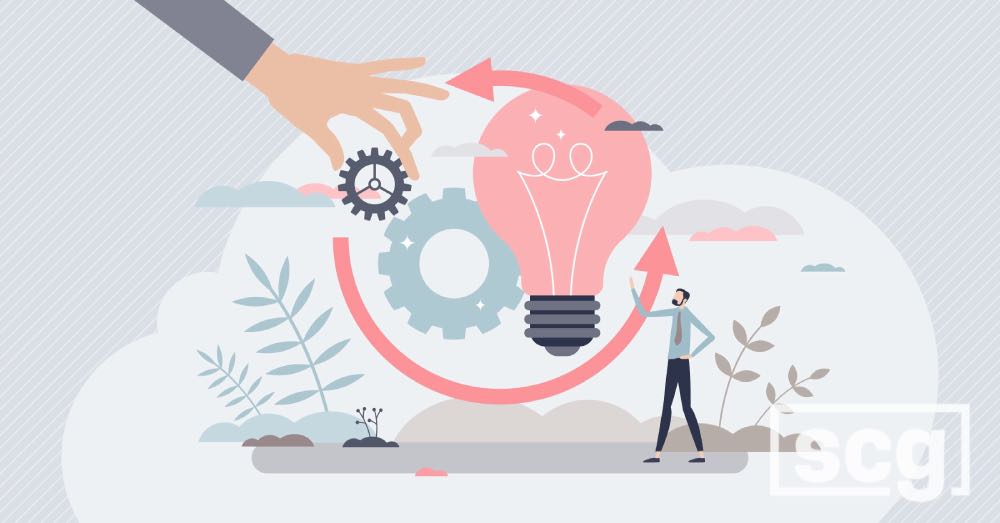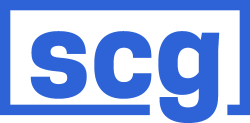Are your conversion rates meeting your ambitions? The road to optimized sales is a journey with many checkpoints. I understand the intricacies of this path intimately. Having pioneered with NetSuite’s SuiteCommerce Advanced Group, the lessons learned are imprinted in every strategy I devise for eCommerce success.
Crafting a User-Focused Website Experience
In eCommerce, laser-focused attention on user experience (UX) is a cornerstone of conversion rate optimization. Elevated UX transcends mere aesthetic appeal, forging deeper connections with customers’ needs, becoming indispensable.
Harness the power of intuitive navigation, lightning-fast load times, and clear, compelling calls-to-action (CTAs) to engineer an environment where users feel understood, and their journey to purchase is seamless. Each element is crafted with the end user’s ease in mind, guiding them to a gratifying transaction.
Remember, “user-focused” and “conversion-optimized” are not mutually exclusive terms—they are complementary strategies to amplify your eCommerce platform’s performance.
Streamlining User Navigation Paths
Crafting intuitive pathways is essential to reduce friction and guide users toward conversion with strategic ease and precision.
Intuitive navigation can dramatically increase conversion rates, fostering an environment for seamless shopping experiences.
By judiciously structuring site menus and categories, we significantly bolster users’ ability to find products swiftly, enhancing their overall shopping experience.
A meticulous approach to navigation design yields a frictionless path for users, ultimately leading to higher engagement and an uptick in successful transactions.
Enhancing Product Visualization
Visual allure captivates and retains customer attention.
High-definition images provide a window to quality and detail. Incorporating multiple angles and zoom-in capabilities allows customers to engage intimately with the product, fostering higher confidence in their purchase decisions. Interactivity through 360-degree views adds a tangible feel, diminishing the distance between online shopping and the in-store experience.
Size and scale in imagery matter greatly.
Dynamic visualization tools are indispensable assets. Advanced image rendering techniques and augmented reality can provide customers with a lifelike preview of the products in their own space, bridging the gap between virtual and physical realms.

Leveraging Analytics for Informed Decisions
Harnessing the power of analytics is crucial in sculpting an eCommerce landscape that caters to the sophisticated needs of today’s digital consumers. By meticulously tracking and analyzing customer interactions, we can distill actionable insights that guide strategic improvements. These insights are indispensable, functioning as the compass that directs us toward optimal user experiences, which, in turn, bolsters conversion rates.
Every metric tells a story in data-driven refinement, outlining a “conversion narrative.” This narrative sheds light on customer behavior patterns, pinpointing areas of friction that may impede the path to purchase. From page load times to navigation ease, each element is scrutinized through data analytics. Armed with this knowledge, we implement targeted enhancements that enhance the customer journey and align precisely with the expectations that customers have come to demand.
Understanding Shopping Cart Abandonment
Shopping cart abandonment is critical, thwarting potential sales at a critical junction in the eCommerce funnel.
-
Unexpected Costs: Additional fees revealed during checkout can deter consumers from finalizing their purchase.
-
Complex Checkout Process: A checkout process with too many steps can overwhelm and frustrate shoppers.
-
Security Concerns: Shoppers may abandon their cart if they do not trust the site’s capability to protect their personal information.
-
Mandatory Account Creation: Forcing customers to create an account before purchasing can lead to cart abandonment.
-
Inadequate Payment Options: A limited range of payment methods can turn potential buyers away.
-
Poor Website Performance: Slow loading times and crashes can prompt users to leave without completing their purchase.
-
Unsatisfactory Return Policies: Customers are likely to abandon carts if the return policies are not to their liking. Addressing these factors requires a strategic approach and a deep understanding of user behavior. Optimizing the checkout experience is fundamental in converting abandoned carts into successful transactions.
A/B Testing: A Conversion Goldmine
The verdict is clear—A/B testing optimizes conversion rates.
Imagine wielding a tool so robust it could unequivocally pinpoint the success.
Performance metrics illuminate—guiding strategic enhancements.
Insights culled from A/B tests are invaluable, carving paths to consumer satisfaction.
A/B testing: the linchpin of a conversion-focused strategy.
Through meticulous A/B trials, conversions ascend—a testament to their efficacy. The key lies in dissecting these tests, interpreting nuanced data, and applying it to refine the user’s journey. As we mold each aspect of our digital storefront, from the homepage to product recommendations, A/B testing serves as our compass, steering us toward peak conversion performance.
In the mosaic of digital commerce, each element plays a pivotal role—illusory changes cascade into monumental impacts on conversion rates. Unveiling which variations of our website elements resonate profoundly with our audience is not just insightful; it’s transformative for our business. Prudent A/B testing aligns with the pulse of consumer preferences, ensuring we remain synchronized with their evolving expectations well into the latter quarters of 2023 and beyond. Embrace this pivotal practice to sculpt the customer experience, fortify your brand’s position, and unlock your eCommerce platform’s potential to yield unsurpassed conversion rates.
Personalization: The Conversion Catalyst
In the competitive arena of digital storefronts, personalization is a linchpin for conversion success, acting as a magnet for consumer attention and engagement. Data analytics and machine learning algorithms afford us the power to curate experiences that resonate personally with each visitor, transforming a digital space into a welcoming environment that mirrors the intimate feeling of a bespoke boutique.
Harnessing the full potential of personalization lies in striking a delicate balance between relevance and privacy, creating a “conversational commerce” that nurtures trust. When customers feel understood, not just seen, they are more likely to convert, becoming purchasers and advocates. Over time, the collected data allow us to refine and perfect the art of personalization, cementing a profitable and enduring bond with customers.
Segmenting Audiences for Tailored Messaging
Effective communication in eCommerce pivots on resonating with specific audience segments.
-
Identify behavioral patterns by analyzing website interaction data to group users with similar activities.
-
Demographic Segmentation involves classifying audiences by age, gender, occupation, or income level.
-
Geographic Details allow for customization of content based on location-specific interests and needs.
-
Psychographic Segmentation looks at lifestyles, interests, and opinions to tailor messages.
-
Technographic Segmentation categorizes customers based on their technology preferences and usage.
-
Purchase History Analysis helps anticipate needs and pitch relevant products accordingly.
-
Lead Scoring uses engagement metrics to prioritize high-intent users for personalized messaging. Laser-focused messaging elevates user engagement and propels conversion rates. Segmentation empowers businesses to deliver precision-targeted content, driving meaningful interactions.
Upselling and Cross-Selling Strategies
- Upselling requires clever positioning of premium alternatives to favored products.
- Through customer data analysis, discern patterns that inform strategic product pairings.
- Bundle similar or complementary goods to encourage increased average order values.
- Educational content and comparisons can nudge customers towards higher-priced items.
- Cross-selling builds on buying motives to maximize cart additions and revenue.
Speed and Security: Non-Negotiables for Trust
In eCommerce, sluggish page loads and dubious security quickly erode customer trust, sabotaging sales potential. Customers rightfully expect instantaneous load times and ironclad security. Neglecting these can harm your brand’s reputation irreparably, leading to dwindling conversions and heightened churn rates.
Optimizing Site Speed for Impatient Shoppers
The patience of today’s online shopper wears thin with each unnecessary second of loading time, compelling the need for warp-speed site performance. High expectations for instantaneous access underscore the urgency of optimized speed.
Shoppers are quick to abandon carts in the face of slow-loading pages. Your eCommerce platform must be an exemplar of efficiency and agility.
Visitors judge a site’s credibility not just by its content but also by its responsiveness. A swift page load correlates strongly with customer satisfaction and reduced bounce rates, enhancing sales opportunities.
Innovations in speed optimization—such as advanced caching techniques, streamlined code, and accelerated mobile pages (AMPs)—have set a new precedent in the eCommerce realm. Maximizing speed is not a luxury; sustaining consumer engagement and increasing conversion rates is necessary. For an elite shopping experience, benchmark your site against the leaders in speed and refine relentlessly.
Fortifying eCommerce Security Measures
In an era where data breaches are not uncommon, safeguarding customer information is a foundational pillar in eCommerce success. Protecting this sensitive data requires robust security measures, deploying only the most impenetrable systems.
Protect personal data like a fort holds its treasure. Implement ironclad authentication protocols for utmost integrity.
Frequent security audits are a must to ensure relentless defense against evolving cyber threats, fortifying your fortress (your eCommerce platform) through continuous scrutiny.
Use advanced encryption methods to cloak customer data, mitigating unauthorized access or interception risks and ensuring trust.
Regularly update your platform’s security features to counteract new vulnerabilities, employing a multilayered security strategy that includes the latest defenses against potential breaches.
Moreover, educate your team on security best practices, creating a vigilant culture that reinforces safeguarding customer data.

What is conversion rate optimization for eCommerce?
Conversion rate optimization (CRO) for eCommerce refers to systematically improving the percentage of website visitors who take a desired action, such as purchasing. It involves analyzing user behavior, identifying barriers to conversion, and implementing strategies to increase the likelihood of a successful conversion.
CRO aims to optimize the entire customer journey, from when a visitor lands on the website to completing a purchase. It involves understanding users’ needs, motivations, and preferences and adjusting various website elements, such as website design, navigation, messaging, and product presentation, to improve the user experience and encourage conversions.
By implementing CRO strategies, eCommerce businesses can increase their conversion rates, drive more revenue, and improve the overall profitability of their online stores. It allows businesses to make data-driven decisions and continuously test and refine their website to maximize conversion rates and increase customer satisfaction.
Key techniques used in conversion rate optimization for eCommerce include A/B testing, where different versions of a webpage are tested to determine which one performs better; web analytics, to track user behavior and measure the effectiveness of conversion efforts; and user testing, to gain insights into how users interact with the website and uncover areas for improvement.
In summary, conversion rate optimization for eCommerce is a systematic approach to improving the percentage of website visitors who take desired actions, ultimately leading to increased conversions, revenue, and customer satisfaction. It combines data analysis, user experience optimization, and continuous testing to achieve optimal results in the highly competitive online marketplace.
Why is conversion rate optimization important for eCommerce businesses?
Conversion rate optimization is crucial for eCommerce businesses because it directly impacts their bottom line. Simply put, it refers to improving the percentage of website visitors who take a desired action, such as purchasing or signing up for a newsletter.
By optimizing the conversion rate, businesses can maximize the value they derive from their website traffic. Instead of solely focusing on increasing the number of visitors to their website, businesses can focus on improving the user experience, targeting specific customer segments, and implementing effective marketing strategies to convert those visitors into paying customers.
Increased conversion rates lead to higher revenue and profitability for eCommerce businesses. By optimizing their website design, layout, and content, businesses can enhance the overall user experience, making it easier for customers to navigate, find relevant information, and ultimately purchase. This can result in higher average order values, repeat purchases, and customer loyalty.
Conversion rate optimization also helps businesses identify areas of improvement and potential bottlenecks in their sales funnel. Through data analysis and testing, businesses can identify which elements of their website and marketing campaigns are driving conversions and which are hindering them. This allows for targeted optimization efforts to maximize the impact of marketing strategies and improve overall conversion rates.
Furthermore, in the competitive landscape of eCommerce, businesses cannot afford to overlook conversion rate optimization. With countless options available to consumers, businesses must ensure their website stands out and provides a seamless and enjoyable shopping experience. By continually optimizing and refining their conversion rates, businesses can gain a competitive edge and establish themselves as a trusted and preferred destination for online shopping.
Boost your online sales with the expertise of the SCG Team! As a leading NetSuite Partner and conversion rate optimization specialist, we have helped countless clients across various industries achieve remarkable results. Whether you’re a C-Level Executive, IT Manager, eCommerce Manager, or Sales and Marketing Professional, our team is here to supercharge your online business. Contact us today via our site chatbot, hello@seibertconsulting.com, or call us at 760-205-5440. Don’t miss the opportunity to skyrocket your conversion rates and elevate your eCommerce success. Let’s make your online store a conversion powerhouse!






